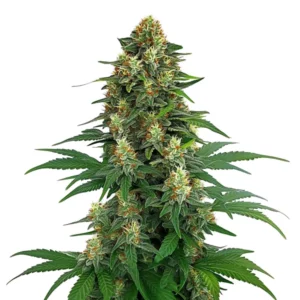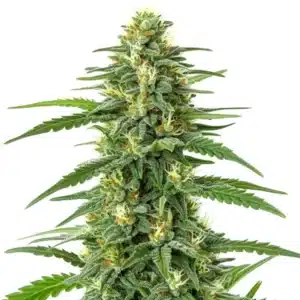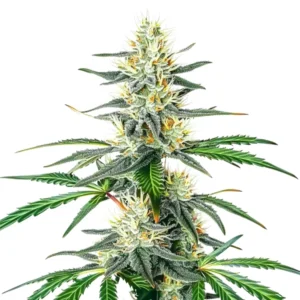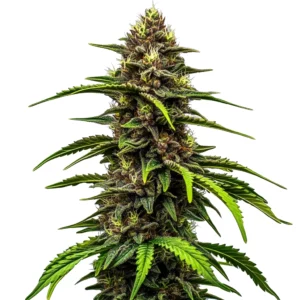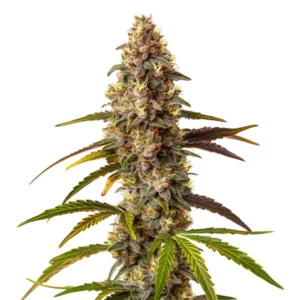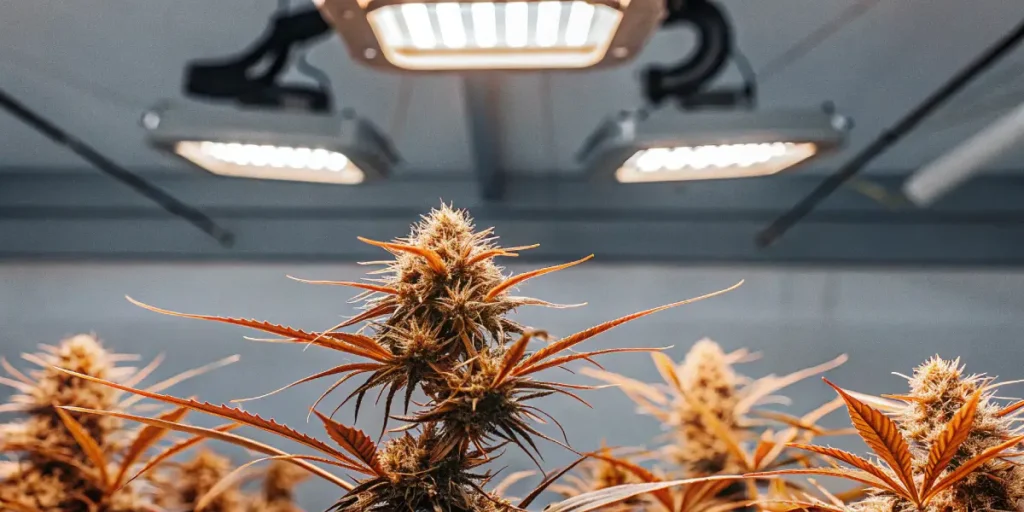
ROS Signaling and Cannabis Terpene Production
ROS signaling and cannabis terpene production may sound complex, but it’s key to growing aromatic, potent cannabis. Reactive Oxygen Species (ROS) are molecules that play a part in plant stress responses. While “stress” might sound negative, in plants, it can enhance terpene profiles, leading to more flavorful and aromatic cannabis.
Terpenes, the compounds responsible for the scent and flavor of cannabis, can be influenced by ROS. When plants experience certain stresses, such as light changes or nutrient variations, ROS signaling pathways in cannabis terpene synthesis are activated. This can modify the plant’s natural chemistry, leading to unique terpene expressions.
Recommended Strains
Tangie
|
|
THC | 19% - 22% (Medium) |
|
|
Type | Feminized |
|
|
Yield | High |
|
|
Phenotype | 30% Indica / 70% Sativa |
Blue Dream
|
|
THC | 17% - 24% (Medium) |
|
|
Type | Feminized |
|
|
Yield | High |
|
|
Phenotype | 50% Indica / 50% Sativa |
Growers aiming for high terpene yields should consider the effects of ROS on cannabis terpene profiles. By adjusting growing conditions, you can encourage ROS activity, potentially boosting both the quantity and quality of terpenes. Strains like Tangie, available at Blimburn Seeds, are known for their rich citrus aroma, making them an excellent choice for terpene-focused cultivation.
ROS Signaling Pathways in Cannabis Terpene Synthesis
The interaction between ROS and cannabis terpene production involves intricate signaling pathways. These pathways are essentially the communication routes within the plant that trigger certain responses. When stressed, plants produce ROS, which can activate enzymes involved in terpene biosynthesis.
Knowing these pathways helps growers optimize their cultivation techniques. For instance, controlled light stress can stimulate ROS production, enhancing terpene profiles. Strains like OG Kush, another excellent option from Blimburn Seeds, thrive under these conditions, producing robust flavors and aromas.
Delving deeper into the ROS signaling pathways in cannabis terpene synthesis reveals the complexity and adaptability of cannabis plants. These pathways allow the plant to adapt to environmental changes, ensuring survival while enhancing aromatic qualities. Growers can leverage this adaptability to cultivate strains with specific terpene profiles, tailored to market demands.
Incorporating a systematic approach to knowing ROS signaling and cannabis terpene production can significantly benefit commercial growers. By mapping out the signaling pathways, growers can predict how a plant will react to certain stressors, allowing for a more controlled cultivation process. This not only optimizes terpene yield but also ensures a consistent product for consumers.
Practical Techniques to Enhance ROS Signaling
To manipulate ROS signaling for enhanced terpene production, growers can employ various techniques. Light manipulation is one effective method. By adjusting light intensity and duration, you can create a mild stress environment that boosts ROS levels.
Another technique involves nutrient management. Introducing specific nutrient stresses at certain growth stages can trigger ROS production. This stress can lead to a more diverse terpene profile, offering unique scents and flavors.
Temperature plays a significant role as well. Cooler night temperatures can increase ROS activity, resulting in richer terpene profiles. Strains like Blue Dream from Blimburn Seeds respond well to this technique, enhancing their natural berry and floral notes.
Advanced growers often experiment with synchronized stress techniques, combining light, nutrient, and temperature adjustments to maximize ROS signaling and cannabis terpene production. This holistic approach ensures that plants are exposed to optimal levels of stress, enhancing the interaction between ROS and cannabis terpene production.
Monitoring tools and technology can also aid in fine-tuning these practical techniques. By using sensors and data analysis, growers can precisely adjust environmental conditions to influence ROS signaling pathways in cannabis terpene synthesis, ensuring consistent and high-quality terpene profiles across different cultivation cycles.
Promos & Deals
Effects of ROS on Cannabis Terpene Profiles
The effects of ROS on cannabis terpene profiles are significant. By modulating ROS levels, growers can directly impact the aromatic profile of their plants. This means more pronounced scents and flavors, which is crucial for both recreational and medical cannabis users.
Growers often aim for specific terpene profiles to cater to different consumer preferences. Some might prefer the citrusy tang of lemon terpenes, while others might seek the calming effects of linalool. Adjusting ROS activity can help tailor these profiles to suit market demands.
The effects of ROS on cannabis terpene profiles extend beyond mere aroma and flavor. They can also influence the therapeutic attributes of the plant, making certain strains more effective for specific medical conditions. This makes ROS modulation a valuable tool in the production of medicinal cannabis.
As growers become more adept at manipulating the effects of ROS on cannabis terpene profiles, the potential for creating custom strains with unique effects increases. This can lead to a broader range of products in the market, offering consumers more choices tailored to their preferences and needs.

Real-Life Examples of ROS Modulation
In practice, growers have reported noticeable changes in terpene profiles by adjusting ROS levels. For instance, increasing light exposure during the flowering stage can enhance limonene and pinene levels, resulting in a more uplifting strain.
Conversely, introducing slight water stress can boost myrcene production, leading to a more sedative effect. This technique is particularly beneficial for strains intended for nighttime use, providing a relaxing, calming experience.
One real-life example involves a grower who successfully used ROS modulation to create a strain with a perfect blend of uplifting and relaxing effects. By carefully balancing light and water stress, they managed to enhance both limonene and myrcene levels, resulting in a versatile strain suitable for various occasions.
Another case study highlights the importance of soil amendments in ROS modulation. By incorporating organic matter and specific minerals, a grower was able to influence ROS activity, resulting in unexpected terpene profiles that became highly popular in niche markets. This demonstrates the potential of ROS modulation for innovative cannabis products.
Role of ROS in Enhancing Cannabis Terpene Yield
The function of ROS in enhancing cannabis terpene yield is an exciting area of study for growers. By leveraging ROS signaling, it’s possible to maximize terpene production, resulting in more flavorful and aromatic plants. This is especially important for commercial growers looking to differentiate their products in a competitive market.
Effective ROS management can lead to higher terpene concentrations, which are desirable for both flavor and therapeutic effects. Terpenes not only enhance the sensory experience but also contribute to the entourage effect, amplifying the plant’s overall impact.
The function of ROS in enhancing cannabis terpene yield is also pivotal in achieving consistent quality across different batches. By mastering ROS modulation, growers can ensure that each harvest meets the desired aromatic and therapeutic characteristics, providing reliability to consumers and retailers.
Research into the function of ROS in enhancing cannabis terpene yield continues to evolve, with studies exploring the genetic factors that influence ROS responses. Knowing these genetic components could lead to the development of new cannabis strains that are specifically bred to respond optimally to ROS modulation, further advancing the field of cannabis cultivation.
Optimizing Growing Conditions for ROS Activity
To optimize growing conditions for ROS activity, consider the entire growth cycle. Each stage offers opportunities to influence ROS levels, from seedling to harvest. For example, altering light cycles during flowering can boost terpene production.
Water management is another crucial factor. Controlled water stress can stimulate ROS, enhancing terpene profiles without compromising plant health. This requires careful monitoring to avoid over-stressing the plants.
Nutrients are also key. Balanced nutrient solutions can maintain optimal ROS levels, supporting healthy growth and robust terpene production. By fine-tuning these elements, growers can achieve their desired terpene profiles with precision.
Advanced optimization techniques involve the use of environmental control systems that automate adjustments to light, water, and nutrient levels. These systems can ensure consistent ROS activity, reducing the variability in terpene yields and allowing for more predictable cultivation outcomes.
Collaborations with research institutions can also provide valuable insights into optimizing growing conditions for ROS activity. By staying informed about the latest findings in ROS signaling and cannabis terpene production, growers can continuously improve their cultivation practices and remain competitive in the market.
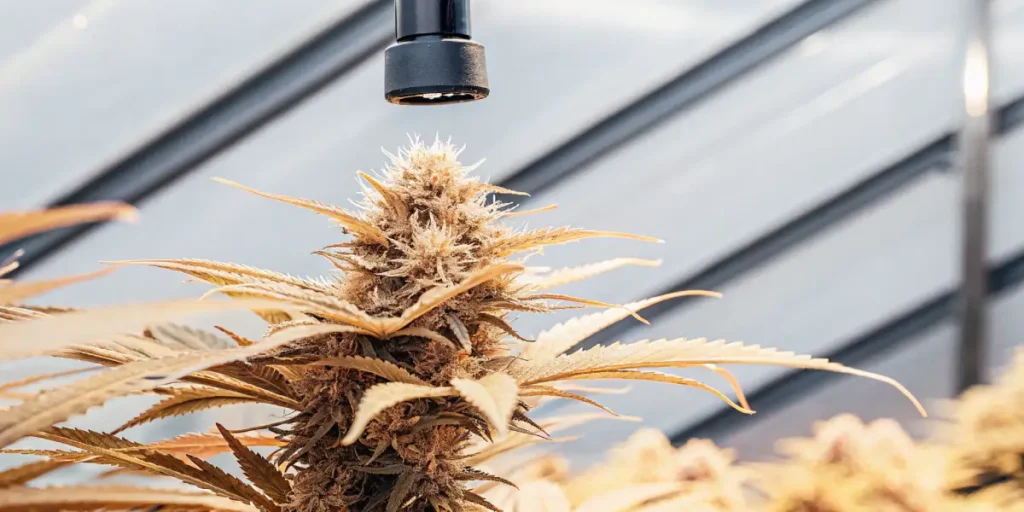
FAQs about ROS signaling and cannabis terpene production
What are Reactive Oxygen Species (ROS) in cannabis?
Reactive Oxygen Species (ROS) are molecules produced in plants during stress conditions. In cannabis, they play a crucial role in signaling pathways that can enhance terpene production. By knowing how ROS function, growers can manipulate them to improve the quality and aroma of their cannabis.
ROS are not inherently harmful. In moderate amounts, they can be beneficial by activating defense mechanisms and pathways that increase terpene synthesis. This makes them a valuable tool for growers aiming to boost the aromatic profile of their plants.
The interaction between ROS and cannabis terpene production is a complex dance of chemical signals and plant physiology. By harnessing this interaction, growers can unlock new levels of terpene expression, elevating the sensory and therapeutic attributes of cannabis strains.
Education on the function and management of ROS in cannabis cultivation is growing. Workshops and courses that delve into ROS signaling pathways in cannabis terpene synthesis are becoming popular among growers eager to refine their craft and produce superior cannabis products.
How do ROS influence terpene profiles?
ROS influence terpene profiles by activating specific enzymes involved in terpene biosynthesis. When plants experience stress, ROS levels rise, stimulating these enzymes and leading to increased terpene production. This can result in more pronounced and diverse scents and flavors.
By carefully managing stress factors like light and nutrients, growers can harness the power of ROS to tailor terpene profiles to their liking. This allows for the creation of strains with unique and marketable aromatic characteristics.
Besides to activating enzymes, ROS can also influence gene expression related to terpene biosynthesis. This genetic modulation can lead to unexpected but desirable changes in terpene profiles, providing an element of surprise and innovation in cannabis cultivation.
Knowing the effects of ROS on cannabis terpene profiles can also aid in identifying potential stressors that negatively impact terpene production. By mitigating these factors, growers can maintain a balance that supports optimal terpene yield and quality.
Can all cannabis strains benefit from ROS modulation?
While many strains can benefit from ROS modulation, the degree of impact varies. Some strains are naturally more responsive to stress-induced terpene production. For example, Tangie and Blue Dream show significant improvements in terpene profiles when ROS pathways are activated.
However, it’s essential to experiment and monitor individual strains closely. Not all plants will react in the same way, and over-stressing can lead to diminished plant health. By knowing each strain’s unique needs, growers can maximize the benefits of ROS modulation.
The adaptability of cannabis strains to ROS modulation can depend on their genetic background and environmental conditions. Some strains may have naturally evolved mechanisms to utilize ROS more effectively, offering an edge in terpene production under stress.
For growers looking to explore ROS modulation, creating a diverse portfolio of strains can be beneficial. By cultivating multiple strains, each with its own response to ROS, growers can broaden their product range and appeal to a wider audience.
What practical steps can growers take to enhance ROS activity?
Growers can enhance ROS activity through several practical steps, such as manipulating light cycles and adjusting nutrient levels. Introducing controlled stress at specific growth stages can increase ROS production, leading to richer terpene profiles.
Temperature management is also crucial. Cooler night temperatures can stimulate ROS activity, making it a simple yet effective technique for increasing terpene yield. By integrating these practices into their cultivation routine, growers can achieve more aromatic and flavorful cannabis.
Another practical step involves using foliar sprays that contain elements known to influence ROS levels. These sprays can be applied at targeted growth stages to boost ROS activity without causing undue stress to the plants.
Collaboration and knowledge sharing among growers can also enhance ROS modulation techniques. By exchanging insights and experiences, growers can develop new strategies for optimizing ROS signaling and cannabis terpene production, leading to better outcomes for the entire community.
Are there any risks associated with ROS modulation?
While ROS modulation can enhance terpene production, there are risks involved. Excessive stress can lead to plant damage, reduced yields, or even plant death. It’s important to apply stress techniques carefully and monitor plant responses closely.
By maintaining a balance and avoiding extreme stress conditions, growers can utilize ROS to their advantage without compromising plant health. Patience and attention to detail are key to successfully modulating ROS for improved terpene profiles.
Knowing the function of ROS in enhancing cannabis terpene yield is essential for risk management. Being aware of the signs of over-stress and implementing corrective measures can prevent potential losses and ensure healthy plant development.
As with any cultivation technique, the key to minimizing risks associated with ROS modulation lies in continuous learning and adaptation. By staying informed about new research and trends in ROS signaling pathways in cannabis terpene synthesis, growers can refine their methods and reduce potential downsides.


